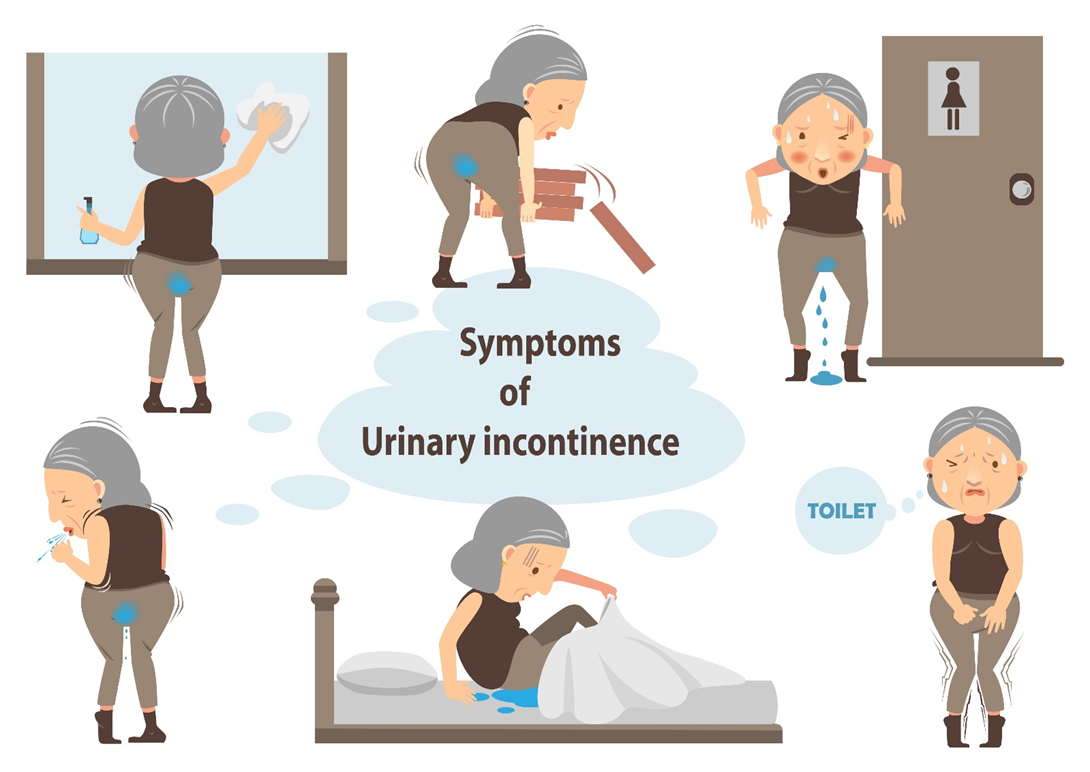Some things that you, as the nurse, might teach your client to help control urinary incontinence include which of the following (Select all that apply)?
Recommending an indwelling urinary catheter
Prompted voiding
Scheduled voiding
Pelvic floor muscle exercises
None of the above
Correct Answer : B,C,D
Choice A reason: Recommending an indwelling urinary catheter is not a good option, as it can increase the risk of urinary tract infections, bladder spasms, and catheter-associated complications.
Choice B reason: Prompted voiding is a technique that involves reminding or prompting the client to void at regular intervals, usually every two to four hours. It can help reduce the frequency and severity of urinary incontinence episodes.
Choice C reason: Scheduled voiding is a technique that involves setting a fixed schedule for the client to void, regardless of their urge or need. It can help prevent bladder overdistension and leakage.
Choice D reason: Pelvic floor muscle exercises, also known as Kegel exercises, are exercises that involve contracting and relaxing the muscles that support the bladder, urethra, and other pelvic organs. They can help strengthen the pelvic floor muscles and improve bladder control.
Choice E reason: None of the above is not a correct answer, as there are three choices that are appropriate for helping the client with urinary incontinence.

Nursing Test Bank
Naxlex Comprehensive Predictor Exams
Related Questions
Correct Answer is B
Explanation
Choice A reason: Performing all activities of daily living (ADLs) and then resting is not a good instruction for the older adult who has COPD, as it can cause fatigue, shortness of breath, and anxiety. The nurse would advise the older adult to pace themselves and prioritize the most important activities, and to take breaks between tasks.
Choice B reason: Bathing and eating slowly with periodic rest is a good instruction for the older adult who has COPD, as it can help conserve energy, prevent dyspnea, and improve digestion. The nurse would advise the older adult to use a shower chair or a handheld showerhead, to avoid hot water or steam, and to use a fan or an open window for ventilation. The nurse would also advise the older adult to eat small, frequent meals, to avoid foods that cause gas or bloating, and to drink fluids between meals rather than with them.
Choice C reason: Walking short distances without oxygen is not a safe instruction for the older adult who has COPD, as it can cause hypoxia, which is a low level of oxygen in the blood. The nurse would advise the older adult to use oxygen therapy as prescribed by their doctor, and to monitor their oxygen saturation with a pulse oximeter. The nurse would also advise the older adult to exercise regularly, but to start slowly and gradually increase the intensity and duration, and to stop if they feel dizzy, chest pain, or severe breathlessness.
Choice D reason: Bathing right after eating and then resting is not a helpful instruction for the older adult who has COPD, as it can cause indigestion, reflux, or aspiration. The nurse would advise the older adult to wait at least an hour after eating before bathing, and to avoid lying down right after eating or bathing. The nurse would also advise the older adult to elevate their head with pillows when resting or sleeping, and to avoid napping during the day.
Correct Answer is C
Explanation
Choice A reason: Histoplasmosis is a fungal infection that affects the lungs, but it is not a chronic condition and does not cause airflow obstruction. It is not included in the diagnosis of COPD.
Choice B reason: Bacterial pneumonia is a bacterial infection that causes inflammation and fluid accumulation in the lungs, but it is not a chronic condition and does not cause permanent damage to the airways. It is not included in the diagnosis of COPD.
Choice C reason: Bronchial asthma is a chronic condition that causes inflammation and narrowing of the airways, resulting in difficulty breathing, wheezing, coughing, and chest tightness. It is one of the main conditions that make up COPD, along with chronic bronchitis and emphysema.
Choice D reason: Mycobacterium tuberculosis is a bacterial infection that causes tuberculosis, a serious disease that affects the lungs and other organs. It is not a chronic condition and does not cause airflow obstruction. It is not included in the diagnosis of COPD.
Whether you are a student looking to ace your exams or a practicing nurse seeking to enhance your expertise , our nursing education contents will empower you with the confidence and competence to make a difference in the lives of patients and become a respected leader in the healthcare field.
Visit Naxlex, invest in your future and unlock endless possibilities with our unparalleled nursing education contents today
Report Wrong Answer on the Current Question
Do you disagree with the answer? If yes, what is your expected answer? Explain.
Kindly be descriptive with the issue you are facing.
